As the Americans won the first major victory in world war
Situation on the Western Front
After losing the battle on the Marne, the German army in early August 1918 began to roll back to its original positions. German troops, restraining the onslaught of the Allies, consistently, in perfect order, retreated to the line r. Urk, and then on the rivers Ena and Vel. 2 August the French occupied Soissons, and the next day reached the river. Vel. Thus, the bloody and persistent offensive operations of the German army in the previous period (the so-called "Spring Offensive") were in vain, and the Germans only finally exhausted their forces and resources, trying to inflict a decisive defeat of England and France before the transfer of the main forces of the American army in Western Europe. From that moment on, the German army retreated to the end of the war. In addition, German troops were demoralized, their hopes for peace were destroyed. Mass desertion and even rallies began. The troops, which were transferred to the Western front from the Eastern, from Russia, carried with them disintegration and defeatism.
Russian military historian General Andrei Zayonchkovsky analyzed the reasons for the failure of the last German offensive of the First World War: “The German command had to timely recall the first Marn battle, when the unsecured right flank of the German armies was attacked by the French, as a result of which the battle was lost. In July, the 1918 of the year, almost in the same area, the French replicated the events of the 1914 of the year, re-using the insufficiently provided right flank of the Germans. ... Thus, although twice, in March and May, the Germans seemed very close to victory, their campaign plan to defeat the armed forces of England and France failed. ... Now the German command could be convinced that in order to go to the beginning of 1918 of the year to the strategy of crushing and for its success, suppressive forces and means were needed, and there were not any of them. Eventually, the Germans lost 21 to 800 people from 000 in March, greatly reduced their human reserves and caused an acceleration of transportation of Americans to France. Now for the Germans, it would have become clear that the question was no longer about victory, but about tolerable conditions of peace. ”
On August 8, a large-scale offensive of the Entente forces against the Germans began, which will continue until the very end of the war (Compiegne Armistice) and later will be called the Hundred Day Offensive. On August 8–13, the Allies forces of the 4th British, 1st and 3rd French armies conducted the Amiens operation, during which the Amiens ledge occupied by the 2nd and 18th German armies was liquidated. The operation began suddenly, without preliminary powerful artillery preparation. Supported by artillery and infantry Tanks Allies advanced 11 km in the first day of the offensive. Ludendorff called August 8 "the rainy day of the German army." After the battle of Amiens, the German command decided to abandon any offensive operations and go on to defend the occupied territories.
After that, on the French front, the Allies continued to slowly but steadily crush the German troops. Thus, on August 21, the Second Battle of the Somme began, in which the Anglo-American forces waged an offensive. The Allies actively used tanks, the Germans slowly retreated. 22 August was liberated the city of Albert. By August 26, the British advanced another 12 - 20 kilometers, freeing the town of Vankurt. German troops preferred not to get involved in bloody battles, and retreated to the well-fortified line of the Hindenburg (Siegfried). In the meantime, the French troops continued their offensive north of Paris and pushed the Germans around Lassigny. As a result, from 8 to 30 in August, the armies of the Entente on the front from Soissons to Arras advanced in 150 km in the center to 35 km, and on the flanks - on 15 - 20 km.
In the same period, the situation inside Germany began to heat up. 25 August in Germany, a wave of political rallies and strikes demanded the early conclusion of peace, democratization and improvement of living conditions. The unrest encompassed not only Berlin, but also the mining region of Upper Silesia and Saxony, the factories of the Ruhr, Bavaria. In total, up to 2,5 of millions of workers took part in the strikes.
On August 30, the Allied offensive continued, first on the flanks, and then in the center, with the aim of preventing the German forces from gaining a foothold in front of the Hindenburg line. August 31 began the battle for Mont-Saint-Quentin - in the Somme River basin, on the outskirts of the town of Peron. Here against the Germans were the Australian part. On the night of August 31, the Australians successfully crossed the Somma in a river bend. Seizing the enemy's trenches, 1 September, the Australians liberated the city of Peron itself and forced the Germans to retreat. And in the area of the city of Arras, in the north of France, the Germans were defeated and forced to retreat Canadian units. The threat from both flanks forced the German command 2 of September to order the further withdrawal of the 17, 2, 18 and 9 armies on the front between the Scarn and Vel rivers for 160 km to the position of Hindenburg (or Siegfried). The departure began on the night of September 3 and passed almost without interference from the enemy. September 8 German troops occupied most of those positions on the front from Arras to r. Ellet, from which they began the spring offensive. In addition, in early September, German troops themselves cleared the protrusion on the r. Fox
Map source: A. Zayonchkovsky. World War 1914 — 1918
Saint-Miel operation
Thus, the Allies consistently pushed the German army from previously captured territories. It only remained to oust the enemy from the Saint-Mielsky ledge formed in September 1914 when the Germans tried to break through the French front south of Verdun. The ledge crossed the Paris-Verdun-Nancy railway line and did not allow the Allies to use the section of the Vitry-le-François-Commersi-Thule railway. On the other hand, he covered the Metz, the iron ore development at Brieuc and in many respects provided the communications of the German troops south of the Ardennes.
The offensive operation was to be carried out by the 1-I American army under the command of General D. Pershing. The American army was tasked with eliminating the Saint-Mielsky ledge, reaching the front of Norou, Odimon, freeing the Paris-Verdun-Nancy railway, and thereby creating a favorable starting position for further offensive. Along with the American army 1, the French colonial corps 2 was also involved in the offensive. The plan of the operation provided for two strikes in converging directions under the base of the ledge with the aim of surrounding the German forces there. The main blow was struck on the south face of the ledge, auxiliary - on the west. The offensive was originally scheduled for September 10, but due to the fact that the French heavy artillery did not have time to take positions by the deadline, the operation had to be postponed to September 12.
By the beginning of the offensive, the American command had concentrated on the front of Odimon, Saint-Miel, Norou, stretching for 64 km 17 infantry divisions (of which 3 was French), 2900 guns, 273 tank and 1100 aircraft. Most of the heavy weapons - artillery, tanks and aircraft, the Americans received from the French army. On the southern face (18 km) of the projection were 7 American divisions, on the western (about 10 km) - 3 division. The site in the center was occupied by 2 divisions of the 2 of the French colonial corps; the reserve was made up of 5 American divisions.
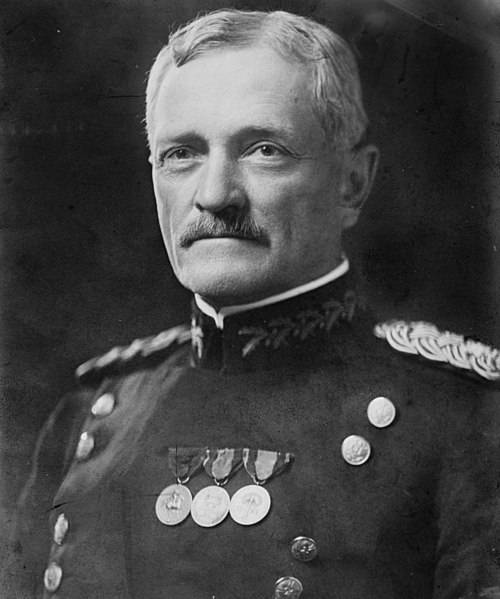
American General John Pershing
From the German side, the Saint-Miel ledge was defended by 7 heavily weakened divisions of the Army Group of Galvitz, which had at their disposal 560 artillery pieces and about 200 aircraft, including Aviation neighboring plots. Also 3 divisions were in reserve. As a result, superiority over the Germans, given that the American division was more than double the German, was overwhelming. In the direction of the main blow, it was eight times. The German command received information about the impending enemy offensive and on September 11 began the withdrawal of troops to a prepared position in the rear of the Saint-Miel ledge, which was supposed to end on September 12 at 4 o’clock in the morning. However, by the start of the American offensive, the evacuation was still far from complete.
12 September Allies began artillery preparation at 1 at one in the morning. At 5 in the morning hours, with the support of tanks, an attack began on the southern face, and in 8 hours - on the western face of the Saint-Mielsky ledge. The German defense, captured by the American offensive at the height of the evacuation and deprived of most of its artillery, already taken to the rear, was quickly defeated. The resistance of the German troops in the ledge was weak. The next day, the bulge was almost eliminated. The 14 and 15 of September, the American divisions came into contact with the new German position and at the turn of Norua, Odimon stopped the offensive.
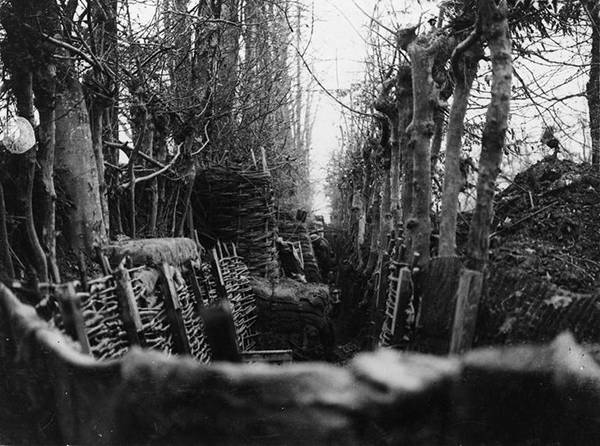
Equipped between two lines of trees camouflaged Germanic trench
Results
As a result of the operation, the front line was reduced by 24 km. During the four days of fighting, German troops lost only 16 prisoners to thousands of people and more to 400 guns. The loss of Americans did not exceed 7 thousand people.
The Saint-Miel operation was the first independent operation of the American army. The offensive was successful. But the fighting showed the weakness of the combat training of troops and the lack of experience of the American command. Thus, most of the allied artillery beat on empty territory, striking positions abandoned by the Germans. The Americans did not timely identify the withdrawal of the enemy. The plan of operation and the management of the advancing troops were not flexible enough. The interaction between infantry, tanks and aircraft was not worked out. During the offensive, the roads were so clogged with soldiers that the timely approach of artillery and tanks was disrupted, and the encirclement of the German troops in the ledge was disrupted even with minimal resistance.
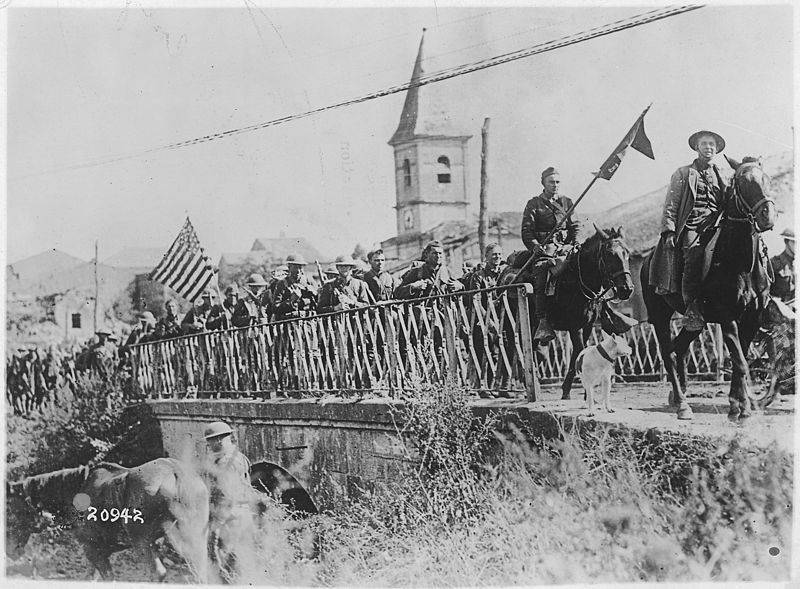
US troops during the Saint-Miel operation
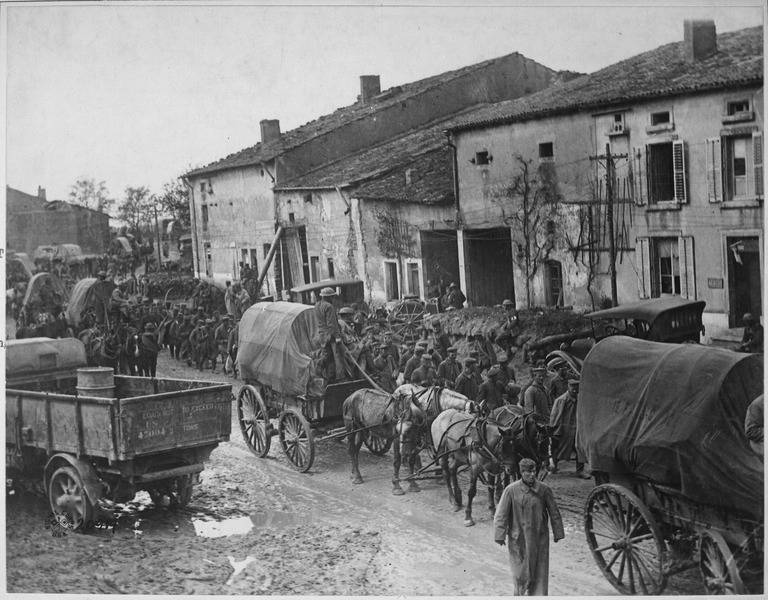
Columns of German prisoners
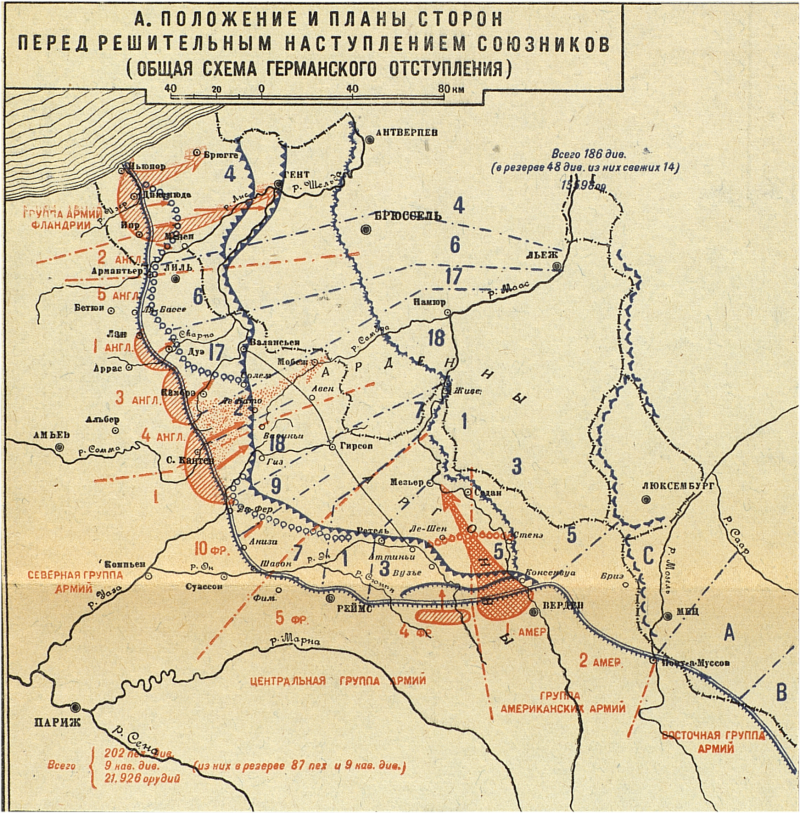
Information